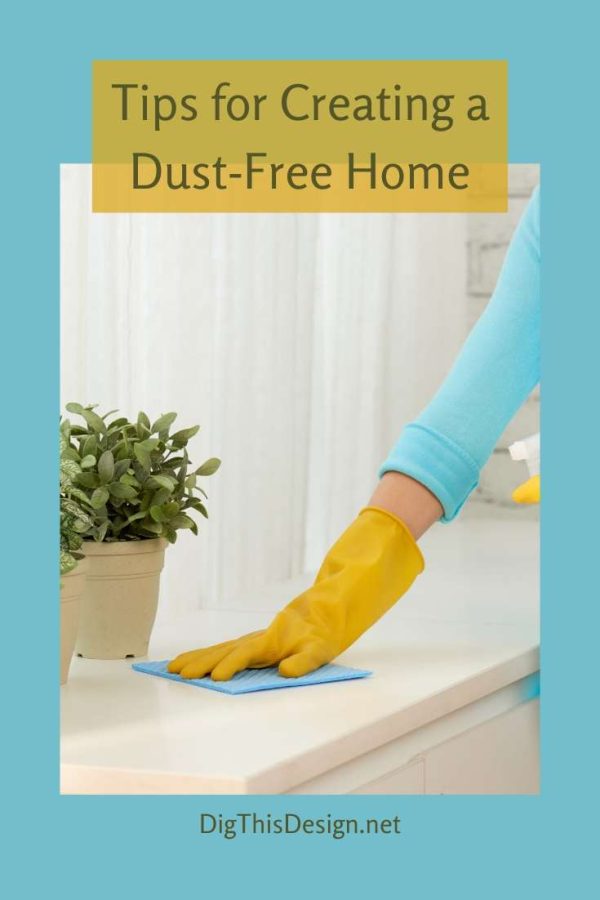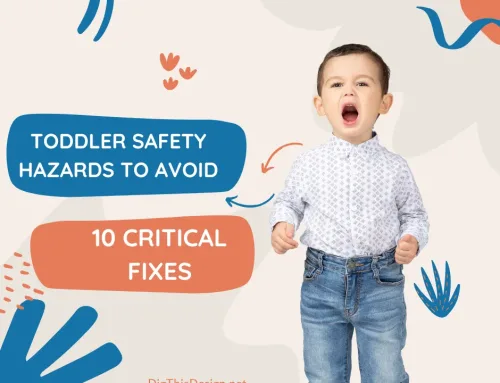Suffering from allergies is awful. Anyone who has them will tell you that the scratchy throat, runny nose, and watery eyes along with difficulty breathing is no fun whatsoever. And to make things worse, when it’s a dust allergy you can’t even hide at home for relief. In fact when you’re allergic to dust mites, home is where you’re likely to feel your worst! Even those who suffer from hay fever and other allergies are likely to be irritated by dust once their symptoms start, even if it’s not the main thing that sets them off, so it’s worth trying to tackle the problem with a dust-free home. Plus, dust is pretty disgusting even if it doesn’t affect your health. Made up of hairs, fibers, pollen, dead insects, dust mites, and their waste it’s not really something you want to let accumulate in your home. Here are some of the ways you can work towards a dust free home.
Tips for Creating a Dust Free Home

Declutter Your Home
Keeping your home in a clean and tidy state will prevent a lot of dust from accumulating in the first place. Store away any clutter, keep surfaces as clear as possible to make cleaning a breeze. If you have a number of small items that are difficult or time-consuming to dust, consider storing them in a glass display cabinet. Things like paperwork can be put into sealed boxes to prevent it kicking up dust every time you go through it. Don’t leave piles of items sitting out for days at a time, instead get into the habit of putting everything in their place. It keeps your home looking neat and less prone to dust.
Replace Your Mattress Every 7 Years
Your mattress will need to be replaced every seven years since after this time it will no longer adequately support your weight. But there’s another reason too. Dust mites and their waste accumulate massively in mattresses which are bad news for allergy suffers. You can use a mattress protector to keep them at bay, but you’re never going to be able to avoid them completely. Dust mites feed on human skin, and since we naturally shed all day every day, we unwillingly provide them with a constant source of food. Because human skin is tough, dust mites produce a powerful digestive enzyme, and it’s this which actually causes allergies in some people. If you suffer from symptoms more when you come to bed, then your mattress could well be the culprit.
Wash Your Bed Linens Regularly
Another reason your allergies could get worse at night is due to your pillows and duvets. Again these are things that dust mites love, and with them being so close to your face when you go to sleep it’s not good news for your breathing. Pillows should be replaced around once a year, and duvets around every three. If you have decorative throw cushions and pillows these can also trap dust and so if you can’t wash them in the washing machine regularly replace. Make sure your bedding is washed regularly on the hottest cycle, this includes throws and other blankets too even if they’re only used for decoration. It goes without saying that you should choose hypoallergenic where possible. You could even go a step further and invest in something like a bamboo pillow. Not only do these help to regulate temperature but they also eliminate dust mites and the bacteria which cause allergies. Anyone with allergies, asthma or lung problems will benefit.
Clean Your Window Treatments Regularly
On a regular day of cleaning, chances are you don’t think too much about the curtains or blinds. But these can be a huge dust trap causing issues for allergy suffers. Curtains should be washed periodically, once a season should be enough. This is because dust mites plus dirt, pollen, and pollution that’s blown in from outside can cling to them. Read the instructions carefully and put them in the hottest wash they can take. Some materials aren’t washable, you could have these professionally cleaned. However, if you have allergy sufferers in the home, buying curtains that can easily be washed is your best bet. Don’t forget blinds too. Carefully clean each slat as these can gather an incredible amount of dust, some vertical blinds will be able to be machine washed but make sure you check first. If not, use a damp cloth.
Vacuum Regularly
How often you need to vacuum depends on a few things. If you live in a busy household, have children or pets then you’re likely to need to vacuum often. If you live in a quieter house, maybe on your own or part of a tidy couple with no pets you can probably get away with once a week. Invest in a good quality, powerful vacuum cleaner which will efficiently remove dust and debris from carpets and rugs. Cheap or older models might simply blow around the dust making it even more unpleasant for an allergy sufferer. A quick vacuum to keep on top of things is fine most days, but make a habit of regularly pulling out the furniture. Dust can accumulate massively behind beds and sofas and behind furniture. These need to be dragged away from the wall and thoroughly vacuumed behind. Don’t forget to vacuum between the cushions on the sofa which can accumulate dust and debris. You can even vacuum your mattress to remove as much dust as possible. Your vacuum cleaner should come with a special mattress attachment to make things easier.
Dust the Nooks and Crannies
The problem with dust is it settles everywhere. You have to be vigilant about keeping rooms dust free. This involves removing all nick-knacks and items from shelves while cleaning each one carefully with a damp cloth or polish spray. Dust the tops of skirting boards, the tops of doors and all of your electronics. The static can cause dust to gather, so carefully clean them on a regular basis. Use a step ladder to make sure the tops of tall furniture is properly cleared. Avoid things like feather dusters to reach, these simply spread the dust around instead of gathering it. You can buy ‘cans of air’ which can help to dislodge dust from crevices such as between computer keys.
Clean Your Carpets Twice a Year
Carpets can harbor all kinds of nasties. The average carpet has traces of vomit, fecal matter, dead insects and in some cases even diseases such as salmonella. Things can get dragged in on our feet from outside causing it to become a breeding ground for germs. Plus dust can accumulate too and set off allergies. For this reason, you should have your carpets cleaned twice a year. You could hire a machine, or get a professional carpet cleaning company around to do the job for you. They will feel fresh and new again, kill the germs and remove the dust mites. It might be tempting to tear up carpets and have them replaced with wooden or tile floors instead.
Clean Out and Organize Your Closets
Aside from humans shedding skin, fabrics shedding fibers is another huge source of the dust in our homes (and a source of food for dust mites). Each time you open your wardrobe you create a tiny dust storm which is invisible to the eye but not to the eyes or nose of an allergy sufferer! While it’s impossible to stop fabrics from shedding there are a few things you can do. Store away out of season clothes in garment bags or plastic boxes, so coats and jumpers in the summer and dresses and skirts in the winter. That way they’re not shedding into your wardrobe all year round. Of course going through and decluttering is useful too. Get rid of anything you will no longer wear which saves it from just sitting there creating dust. Use a wire rack for shoes which keeps the wardrobe floor clean and makes it easier to dust or vacuum.
Keeping the home free of dust is a difficult and ongoing job. It’s something that you have to really keep on top of and be vigilant with to ensure the numbers of dust mites are kept down. Following this advice will dramatically reduce the dust and dust mites in your home, giving some much-needed relief to allergy sufferers. Plus it keeps your home clean and fresh too, which is never a bad thing!
Do you suffer from dust allergy? Do you have any tips and tricks to share which can help to keep dust levels low in the home?
Images Courtesy of Canva.
Other posts you might enjoy:
Key smart Review: Compact, Multiuse, Key Organizer and Storage





